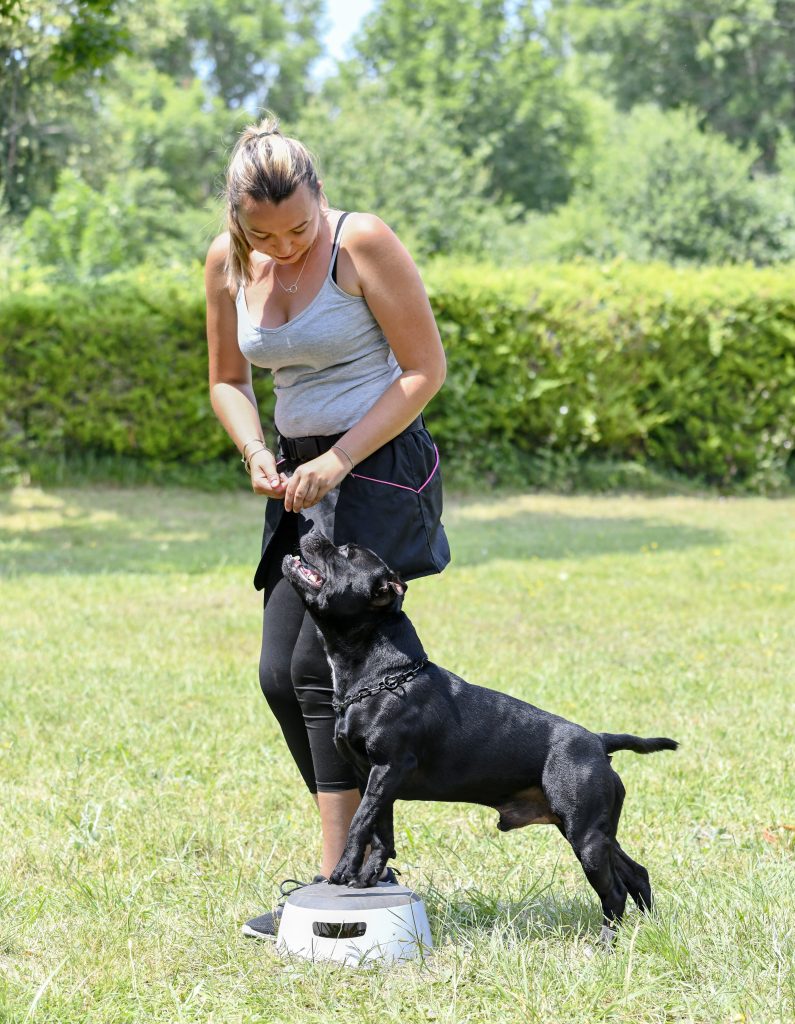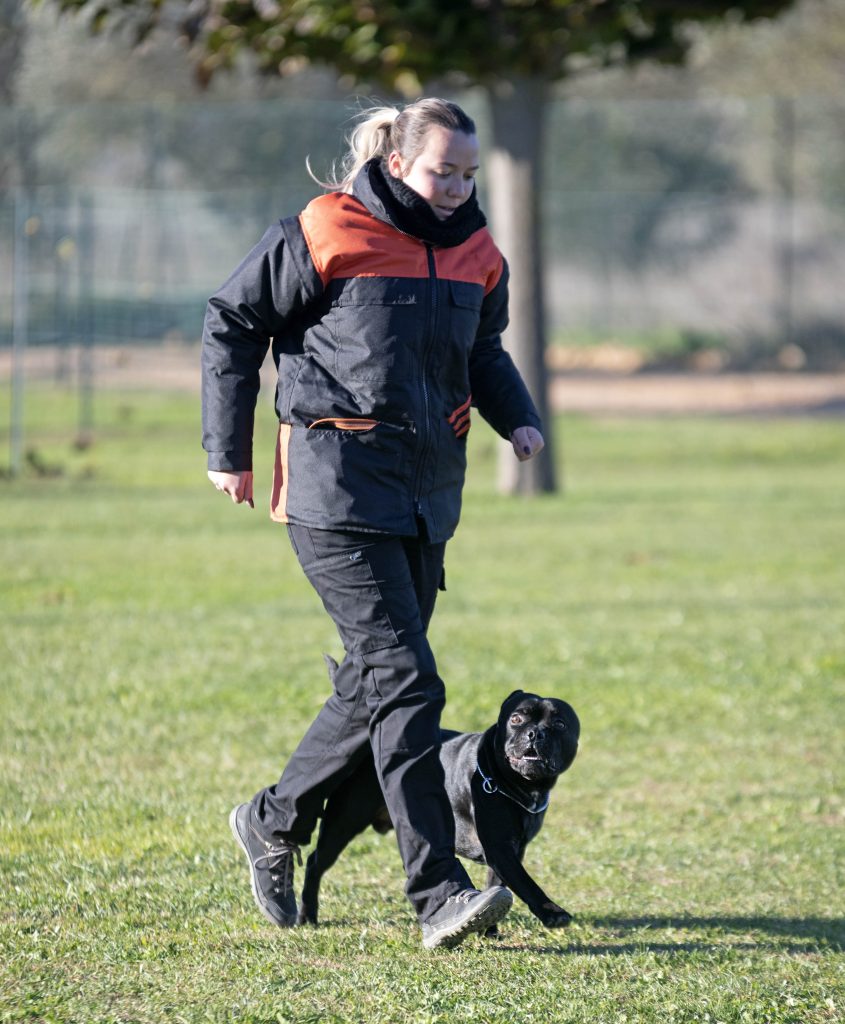
Confidence isn’t just a trait that benefits dog trainers; it’s a cornerstone of successful dog training. At ISCDT, we focus on transforming new handlers into professional dog trainers by emphasizing the importance of dog training confidence.
Understanding how confidence, or lack thereof, affects dog training is crucial for any professional dog trainer. In this blog post we will discuss why confidence is so vital and how it impacts the relationship between handler and dog.
How Low Confidence Affects Dog Training
Dogs are incredibly perceptive creatures, highly attuned to human body language, vocal cues and overall demeanor. When a handler exhibits low confidence, it can significantly impact how dogs perceive and respond to them.
Here are several reasons why dog owners often struggle when training in between our lessons or when relying solely on Youtube videos and dog-training books to train their own dog.
Remember, new dog trainers are not immune to this issue. Training enthusiasts, who had success training their own dog, are often frustrated when teaching other dogs and fail to get the same results.
Body Language:
Observation. Dogs are masters at reading body language. A handler’s confidence, or lack thereof, is readily apparent through their posture, hand signals, and eye contact.

A confident handler maintains upright posture, uses clear hand signals and maintains appropriate eye contact, conveying assertiveness. In contrast, a hesitant handler may slouch, avoid eye contact, and exhibit nervous, jerky movements, which can confuse or cause stress for the dog, thereby hindering training progress.
Impact: These physical cues can signal to the dog that the handler is unsure or fearful, making the dog less likely to follow commands.
Inconsistent Signals:
Observation: Confidence correlates with consistency in communication and actions.
Effective training requires careful planning and consideration of the desired outcome for each session. Failing to plan leads to inconsistencies and unintended results. It’s crucial for handlers to set clear goals and execute techniques consistently to achieve desired training outcomes.
Impact: A person lacking confidence may send mixed signals or hesitate in their commands, leading to confusion and non-responsiveness from the dog.
Voice Tone:
Observation: Confidence is reflected in the tone of voice. A person with low confidence often speaks softly or hesitantly.
When giving commands, make sure it doesn’t sound like a question. Phrasing commands as questions may lead to reduced responsiveness or delayed reactions from the dog, as they may not perceive the urgency or importance of the command.
Likewise, you should not yell when giving commands in a scary voice. A cheerful and upbeat tone motivates dogs to perform tasks eagerly and respond positively to training. Conversely, a monotone, angry or disinterested tone leads to disengagement and lack of responsiveness.
I often hear people claim their dog may not have heard the command given. They will bend at the waist so they are closer to the dog’s face when giving the command. It is important that we keep a straight back when giving commands. Bending at the waist can make a dog feel uncomfortable. It can also lead to facial injury, should the dog jump up while you are speaking to them.
Dogs hear nearly twice as many frequencies as humans. They can also hear sounds much further away than we can. While hearing your commands usually does not play a role when training dogs, the dog’s understanding does.
Impact: Dogs respond better to clear, assertive commands. A confident tone is more likely to elicit a positive response.
Leadership Perception:
Observation: Dogs instinctively look for confident leaders.
Establishing yourself as a calm, confident leader is essential for effective dog training. Dogs respond best to handlers who project confidence and composure. I often notice that by maintaining a calm and confident demeanor during lessons, client dogs naturally gravitate towards settling by my side rather than their owners’. This behavior underscores the importance of consistent leadership in fostering a positive training environment.
Impact: Without confidence, a handler may not convey the necessary leadership and authority, causing the dog to ignore their cues.
Emotional Energy:
Observation: Dogs are highly sensitive to the emotional energy of those around them.

Likewise, when handlers project pity or sympathy during dog training, they may inadvertently reinforce undesired behaviors by providing unintended rewards or rewarding at the wrong time.
Impact: A handler with low confidence may emit feelings of anxiety or insecurity, creating a negative emotional environment that dogs may avoid or tune out.
Trust and Respect:
Observation: Confidence is associated with trustworthiness and reliability.
Trust and respect in dog training will cultivate a positive and supportive environment that fosters learning, cooperation, and a strong bond between themselves and their dogs.
Impact: Dogs are more likely to obey commands from individuals they perceive as confident and capable leaders.
Here are tips for building your confidence and fostering trust and respect with your client dogs:
Building Confidence in Dog Trainers
Building confidence is essential for anyone looking to become a professional dog trainer. Here’s how ISCDT’s training program helps new handlers develop the confidence needed for effective dog training:
Practice:
Consistent practice helps handlers become more familiar and comfortable with training techniques, reducing uncertainty and boosting confidence.
ISCDT students submit numerous videos for each command, ranging from early training techniques to conveying information to clients, building on commands and evidencing the dog’s ability to respond in various settings and situations.
Education:
Comprehensive education on dog behavior, training methods and effective communication provides handlers with the knowledge they need to feel more confident in their abilities.
Using the marker training system (clicker and verbal), we teach students how dogs learn. We then teach how to shape and generalize behavior so dogs can learn with confidence rather than feeling stressed.
Mentorship:
Working alongside experienced trainers provides new handlers with role models to emulate, offering guidance and reassurance as they develop their skills.
Students of ISCDT are paired with an experienced and skilled dog trainer who guides them through the course and provides feedback and tips.
